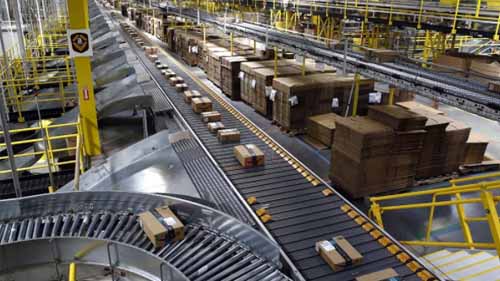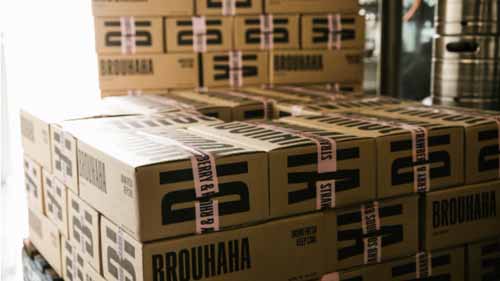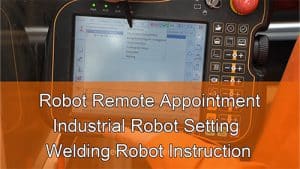
Source: Pinterest
Warehouse automation has always been regarded with mixed feelings. On one hand, warehouse employees are wary of it because it presents a formidable threat to their job security. On the other, manufacturers are drawn to the idea but worry whether warehouse automation offers any return on investment.
While both sides present valid concerns, they also bring forth a very important question. Are warehouse robots a good solution? What benefits do they bring?
To answer these questions, let us explore the benefits that warehousing automation could bring to your warehouse.
Table of Contents
Improved Service Delivery To Customers

Source: Unsplash
When it comes to customer service, wait times are a big deal. Patience is not a virtue when it comes to retail. The average modern customer prefers that their order is fulfilled as fast as possible. As such, if your warehouse runs on slow manual systems with long lead times, customers may prefer alternative suppliers.
Warehouse robots systems work far much faster than humans can. Moreover, their rate of operation is consistent. If a palletizing robot arm can stack 100 boxes per hour, that rate will remain the same all day. It will not tire or slow down or require multiple breaks.
How does this benefit you? You can plan your operations better and handle more inventory in a day than you did before. DHL, the logistics giant, attests to this. The company recorded an 80% increase in fulfillment productivity when it introduced robotic automation in one of its largest warehouses.
Lower Operating Costs

Source: Pixabay
Managing a warehouse while solely relying on human labor is great for employment but tough on profits. Where the volume of inventory being handled is high, you would need more staff and more work shifts to cover the workload. Your expenditure on salaries would be quite hefty. Plus, you would still have to cover other costs like those incurred when employees make errors while handling inventory.
In contrast, if you integrated automation systems in your warehouse, the costs would be much lower. Investing in automation systems is a one-off investment with long-term benefits whereas paying salaries is a recurring expense. Further, given as robots do not have a clock-out time, it means they can work longer at no extra expense. The cost-benefit analysis here certainly leans in favor of automation.
Better Warehouse Organization

Source: Unsplash
In 2019, the Single’s Day sale held by Alibaba attracted about 2.8 billion orders within 24 hours. Astonishing, isn’t it? Now, for a moment, imagine what the situation would be at Alibaba warehouses if each of those orders had to be handled and dispatched manually. Chaos would undoubtedly ensue.
Warehouse automation provides a systematic way of running a warehouse. Goods-to-person technologies, for example, deliver requested inventory items to staff which saves a lot of time. Workers do not have to move across the warehouse in search of items to fulfill orders.
Additionally, with an automatic system in place, you can maintain more stock than with a manual system. Barcode systems and warehouse robots with RFID sensors can facilitate easy daily stock-taking while other robots handle the physical movement of inventory.
Improved Job Satisfaction For Employees

Source: Pexels
Warehouse tasks are repetitive and require long hours of work. There is also very little room for career development as it does not necessarily nurture talents. These factors and other similar challenges are closely linked to high staff turnover in the warehousing business.
Automation lightens the workload that employees have to contend with. No more carting heavy loads or spending hours on end manually stock-taking. Instead, employees can be assigned more productive and less strenuous tasks. This would likely improve their job satisfaction and increase your staff retention rates.
Improved Security

Source: cfiglobal.com.au
If your warehouse suffers perennial losses from pilferage, automation is a highly recommended solution to curb it. Automated inventory management keeps real-time track of all items and thus you would be able to detect any suspicious activity. This can be achieved using RFID chips and warehouse robots that also have compatible sensors.
Alternatively, you could take a different approach like that of XPO Logistics. The firm uses security robots fitted with vision systems and sensors to monitor the grounds of each of its warehouse facilities. The method has so far reported great success in reducing incident rates.
Conclusion
The goal of incorporating warehouse robots is not so much to replace employees but rather, to augment their work. When automated and human labor complements each other, the benefits are maximized for all parties involved.
So, there you have it, warehouse robots give more than they take away. It is all a matter of proper implementation and finding a warehouse robot manufacturer that can offer you the right solutions for your warehouse.
Also Read:




